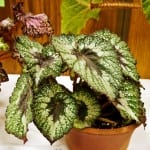 The reasons for providing artificial light for your indoor plants can vary greatly depending on what you’d like to grow. Sometimes a light source is provided temporarily to help a plant get through the winter or to give seedlings a head start before spring plantings. Other times artificial light is added to create a permanent growing environment for ornamental houseplants or indoor crops such as microgreens and hydroponically grown vegetables. Lighting technology has come a long way in the past few years, enabling hobbyists and professionals to get even more out of their light source than ever before, often at an affordable price and reasonable rate of energy consumption. Listed below are the most common types of light used for indoor plantings along with some considerations for each type. Choosing grow lights is not a one size fits all scenario and selecting the right one can be a daunting task; use the information below to help make a more informed decision before making the investment.
The reasons for providing artificial light for your indoor plants can vary greatly depending on what you’d like to grow. Sometimes a light source is provided temporarily to help a plant get through the winter or to give seedlings a head start before spring plantings. Other times artificial light is added to create a permanent growing environment for ornamental houseplants or indoor crops such as microgreens and hydroponically grown vegetables. Lighting technology has come a long way in the past few years, enabling hobbyists and professionals to get even more out of their light source than ever before, often at an affordable price and reasonable rate of energy consumption. Listed below are the most common types of light used for indoor plantings along with some considerations for each type. Choosing grow lights is not a one size fits all scenario and selecting the right one can be a daunting task; use the information below to help make a more informed decision before making the investment.
One of the first things to consider is whether or not, a grow light is actually necessary to achieve the desired outcome. Being able to recognize the symptoms of insufficient lighting will help determine if adding artificial light is the right decision. Some of the symptoms that you may begin to see when plants are not given enough light include: stretching, loss of lower or even all leaves, slowed growth, diminishing leaf size as the plant grows, and chlorosis or yellowing of the leaf surface. Seedlings that are straining to reach for more light will flop over as they grow overly tall. Plants that are not photosynthesizing will use little to no water, causing them to sit in wet media for too long, resulting in root health issues. Conversely, too much light can result in burning of the leaf and stem. This is something that typically occurs when a high-powered grow light is added to a space without first acclimating the plants. When a new light source is added, monitor for symptoms of burning and add light incrementally if possible, either by using a dimmer switch, keeping the light further away to start, or keeping it on for shorter intervals of time. All these techniques can help plants acclimate to increased light levels.